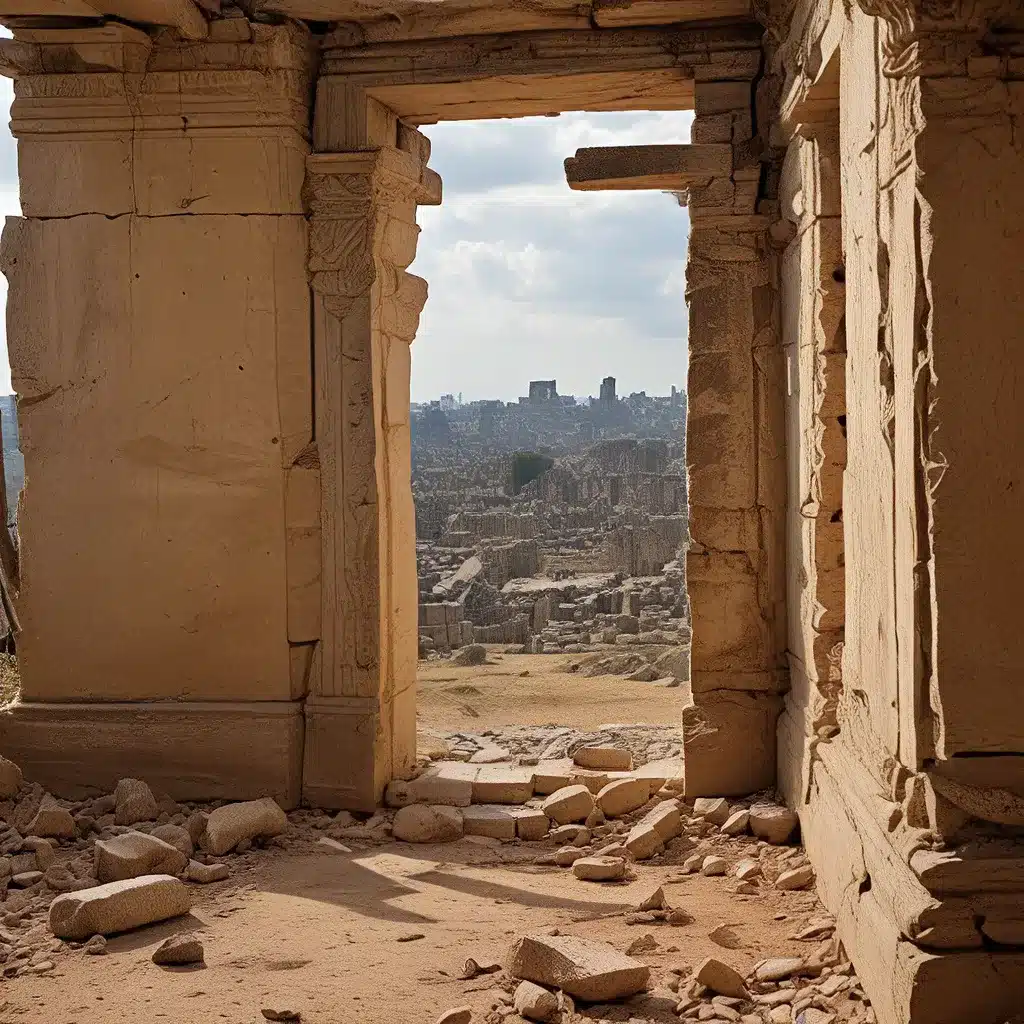
Unraveling the Mysteries of the Past
In the vast expanse of human history, there lies a tapestry of civilizations that have risen and fallen, each weaving a unique story that whispers across the ages. From the grandeur of ancient empires to the remnants of forgotten cultures, these relics of the past offer a tantalizing glimpse into the lives, beliefs, and triumphs of our ancestors. As modern archaeologists and historians delve deeper into these ancient ruins, they uncover not just artifacts and structures, but the very heartbeat of humanity that echoes through the centuries.
One such captivating tale is that of the Indus Valley Civilization, an advanced society that thrived in the Indian subcontinent from around 3300 to 1300 BCE. Boasting sophisticated urban planning, advanced sanitation systems, and a writing system that has yet to be fully deciphered, this ancient civilization stands as a testament to the ingenuity and resilience of the human spirit. Archaeologists have uncovered a wealth of information about their daily lives, trade networks, and religious practices, painting a vivid picture of a highly organized and prosperous society.
Yet, the ultimate fate of the Indus Valley Civilization remains shrouded in mystery. What led to its eventual decline and disappearance? Some scholars suggest it may have been a combination of environmental factors, such as drought or floods, while others point to the possibility of invasions or political instability. Regardless of the cause, the demise of this once-thriving civilization serves as a poignant reminder of the fragility of human endeavors and the importance of preserving our cultural heritage.
Uncovering the Secrets of Lost Worlds
Another captivating chapter in the annals of ancient history is the rise and fall of the Maya civilization. Spanning a vast region of Mesoamerica, the Maya developed a sophisticated understanding of astronomy, mathematics, and writing, leaving behind a rich legacy of architectural wonders, intricate artwork, and complex social structures. Yet, like the Indus Valley Civilization, the Maya also faced their own challenges, and their decline remains a subject of ongoing debate among scholars.
The archaeological evidence suggests that a combination of factors, including environmental degradation, social unrest, and the collapse of centralized political authority, may have contributed to the eventual downfall of the Maya. As the once-thriving cities were abandoned, the lush rainforests gradually reclaimed the land, leaving behind a haunting reminder of the fragility of even the most advanced civilizations.
In recent decades, however, new technologies and innovative research methods have enabled scholars to uncover previously hidden aspects of Maya culture and society. From the use of LiDAR (Light Detection and Ranging) to map the intricate network of Maya cities and infrastructure to the deciphering of their complex writing system, modern archaeologists are piecing together a more comprehensive understanding of this remarkable civilization.
Mysteries and Misconceptions
The stories of the Indus Valley Civilization and the Maya are just two examples of the captivating narratives that emerge from the ruins of ancient societies. Across the globe, archaeologists and historians continue to uncover new insights and challenge longstanding assumptions about the past, shedding light on the rich diversity and interconnectedness of human civilizations.
One such example is the ongoing exploration of the Nazca Lines in Peru. These enigmatic geoglyphs, created by the Nazca culture between 500 BCE and 500 CE, depict a wide range of figures, from geometric shapes to intricate animal designs. For centuries, the purpose and significance of these massive artworks have puzzled researchers, with theories ranging from religious rituals to astrological markers.
Similarly, the Stonehenge in England has long captivated the public imagination, with countless theories and speculations surrounding its construction and purpose. While the true meaning of this iconic prehistoric monument may never be fully known, ongoing archaeological investigations continue to uncover new insights, challenging misconceptions and deepening our understanding of this enigmatic site.
Embracing the Unknown
As we delve deeper into the rich tapestry of ancient civilizations, it becomes increasingly clear that the more we learn, the more we realize how much remains to be discovered. The mysteries and unanswered questions that permeate the ruins of the past serve as a testament to the complexity and resilience of the human experience.
One of the most compelling aspects of exploring ancient cultures is the sense of wonder and humility that often accompanies these endeavors. The Lost Kingdoms website, for example, celebrates this spirit of discovery, inviting readers to embark on a journey through the ages and to embrace the unknown, rather than seeking to impose definitive answers on the past.
By acknowledging the gaps in our knowledge and embracing the mysteries that continue to captivate us, we can cultivate a more nuanced and holistic understanding of the human story. Archaeologists and historians play a vital role in this process, using cutting-edge technologies, innovative research methods, and a spirit of intellectual curiosity to unravel the secrets of the past.
As we continue to explore the ruins of ancient civilizations, we are reminded of the enduring resilience and adaptability of the human spirit. From the grandeur of the Indus Valley to the enigmatic Nazca Lines, these relics of the past offer us a window into the diverse and interconnected tapestry of human history, inspiring us to approach the unknown with a sense of wonder and a deep respect for the stories that whisper from the ruins.


